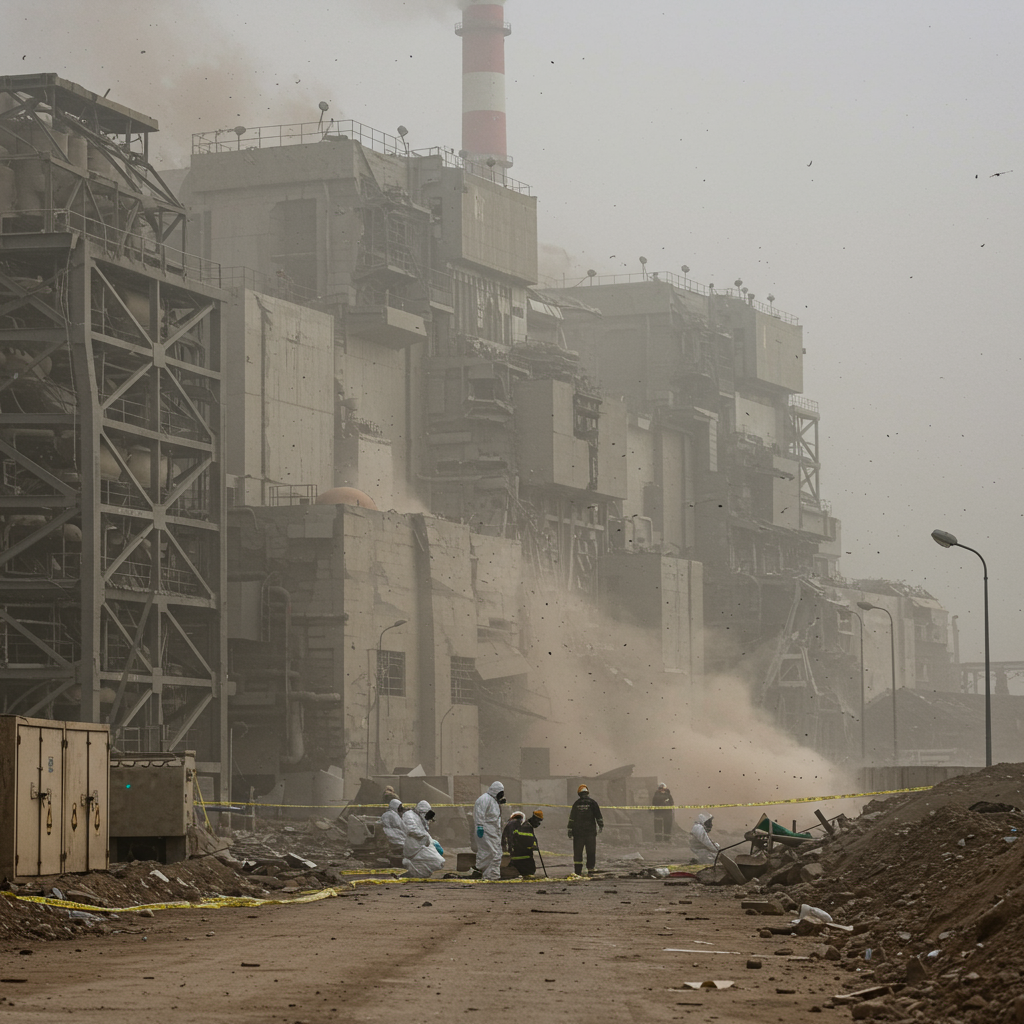A groundbreaking rapid analysis suggests that human-caused climate change significantly amplified the death toll during a recent intense heatwave across Europe. Scientists estimate this influence may have tripled the number of heat-related fatalities in cities examined. This urgent research highlights the escalating dangers of extreme heat in a warming world.
Shocking Study Links Climate Change to Excess Deaths
Just days after record temperatures gripped large parts of Europe, a group of leading climate scientists released a swift evaluation. Their goal was to quantify how much climate change potentially worsened the heatwave’s impact, specifically on mortality. The World Weather Attribution (WWA) initiative conducted this analysis. It stands as one of the first attempts to rapidly link heatwave deaths directly to climate change.
The study focused on a roughly ten-day period of extreme heat peaking between June 23 and July 2 across various European regions. Researchers approximated the number of excess deaths likely attributable to heat during this event. They leveraged historical temperature data and established trends in mortality to make these estimations.
Rapid Analysis Reveals Climate Change Impact
The WWA team meticulously analyzed data from twelve major European cities. They concentrated on the most severe five-day stretch within the heatwave period for each location. By comparing observed temperatures to a model representing a world without approximately 1.3°C of human-induced warming, they could isolate climate change’s effect.
The findings were stark. In the dozen cities studied, an estimated 2,300 heat-related deaths occurred. The researchers concluded that around 1,500 of these fatalities were directly attributable to the hotter conditions caused by climate change. This suggests climate change made the heatwave deadly enough to cause roughly 1,500 additional deaths, effectively tripling the mortality compared to a scenario without global warming.
“These numbers represent real people,” stated Friederike Otto, a climate science professor and study co-author. “They have lost their lives due to the extreme heat.” Without climate change, many parts of Europe would still have experienced hot weather. However, scientists found climate change boosted temperatures by 1 to 4°C in the affected cities. This seemingly small increase proved profoundly dangerous.
While the analysis covered only twelve cities, researchers stressed this was merely a snapshot. The total number of excess deaths across Europe during the heatwave linked to climate change could potentially stretch into the tens of thousands. Specific city data revealed significant impacts. Milan, Italy, saw an estimated 317 climate-attributable deaths. Madrid, Spain, had about 286, representing potentially 90% of its heat deaths in the period. Paris, France, recorded around 235 linked deaths, and London, UK, approximately 173.
The “Silent Killer”: How Extreme Heat Claims Lives
Heatwaves pose a unique threat, often dubbed “silent killers.” Unlike floods or wildfires, their impact is less visible and often occurs away from public view. Most heat-related deaths don’t list heat as the primary cause. Instead, heat exposure severely worsens existing health problems.
Underlying conditions like heart disease, respiratory issues, and diabetes are particularly vulnerable. Extreme heat stresses the body’s ability to cool down, especially in humid conditions which hinder sweat evaporation. This stress can lead to serious complications. These include increased cardiovascular strain, dehydration, heatstroke, high blood pressure, and sleep deprivation. These complications can ultimately prove fatal.
“Most heat-related deaths happen in homes and hospitals,” explained Garyfallos Konstantinoudis, another study author. “They are out of public view and rarely officially reported as heat deaths.” This makes accurate monitoring challenging. Many countries lack robust record-keeping systems for heat-related fatalities. Consequently, the documented death toll often significantly underestimates the true human cost.
Vulnerability and Adaptation: Who is Most at Risk?
While heat affects everyone, certain groups face significantly higher risks. The WWA study highlighted this vulnerability. Their analysis found that individuals aged 65 and over comprised a staggering 88 percent of the excess deaths linked to climate change during this heatwave.
This finding underscores the specific threat to older populations, particularly those with pre-existing health conditions. Other vulnerable groups include children, pregnant women, people with chronic illnesses, and individuals facing adverse socio-economic circumstances or limited access to cooling resources. Despite these specific risks, experts emphasize that people of all ages must take the threat of extreme heat seriously and adopt safety measures.
European countries have made strides in developing heat action plans. These include short-term measures like establishing cooling centers. They also involve support systems for vulnerable populations. Long-term strategies are also crucial. Reducing the urban heat island effect, for instance, through expanding green and blue spaces, is vital. Strengthening public health systems and improving early warning systems are also necessary steps. These measures help ensure communities are better prepared.
Limitations and Future Implications of the Research
The rapid nature of the WWA study, while valuable for timely public and policy attention, comes with limitations. Researchers acknowledged that the analysis could potentially underestimate or overestimate the final death toll. Factors like the timing of the heatwave early in the season can influence mortality. People’s bodies have had less time to acclimate to heat early in the summer.
Furthermore, the data couldn’t fully account for adaptation strategies employed locally. These include public heat warnings or individual use of air conditioning. Despite these limitations, external experts expressed confidence in the study’s findings and methodology.
“We won’t know for some time what the ultimate answer is,” noted Kristie Ebi, a professor not involved in the study, “but this gives us a solid indication of the magnitude of what happened.” She added that the reported number of excess heat-related deaths is likely an underestimate. Using this information can help improve early warning and response systems. This is critical as the world faces hotter and more frequent heatwaves.
The researchers published their rapid analysis promptly. This was done to connect the lived experience of the heatwave with scientific evidence while the event was still fresh in public memory. Studies show that when people attribute extreme weather events to climate change, they are more likely to support climate policies. This aligns with the WWA’s goal of drawing attention to the dangers of extreme heat.
The Long-Term Forecast: Increasing Mortality Ahead
The findings of the WWA rapid analysis point to a concerning future trend. Other research reinforces this outlook. A separate study projects that dangerous temperatures could lead to a substantial net increase in deaths across Europe by the end of the century.
This projection challenges the argument that milder winters might offset the increase in heat deaths. Instead, the rise in fatalities from more frequent and intense heat is expected to significantly outweigh any decrease in deaths linked to colder weather. Even in optimistic emission reduction scenarios, thousands of additional temperature-related deaths could occur annually in Europe. Under higher warming scenarios, this figure could soar to tens of thousands each year, potentially leading to millions of extra deaths by 2100.
This increasing mortality is expected to hit southern and central European regions particularly hard. While adaptation strategies like urban cooling and improved healthcare systems are necessary, studies suggest that only “implausibly strong” adaptation levels would suffice to halt the rising death trend in high warming scenarios. This underscores that while adaptation is vital, the most effective way to prevent heatwaves from becoming deadlier is by drastically cutting greenhouse gas emissions. Stopping the burning of fossil fuels remains the fundamental solution to curbing the escalating threat of extreme heat and its deadly consequences.
Frequently Asked Questions
What did the rapid study find about the European heatwave and climate change?
A rapid analysis by World Weather Attribution found that climate change significantly intensified a recent European heatwave (June/July 2025). Researchers estimated that in 12 cities studied, approximately 1,500 of the 2,300 heat-related deaths during the event were directly attributable to human-caused warming. This suggests climate change tripled the death toll in those specific cities.
Why are heatwaves considered “silent killers”?
Heatwaves are called “silent killers” because they often don’t visibly cause death like other disasters. Instead, extreme heat exacerbates underlying health conditions, such as heart or respiratory diseases, leading to premature deaths. Many heat-related deaths occur at home or in hospitals and may not be officially recorded as heat fatalities, making their true impact difficult to track and often underestimated.
What actions can be taken to reduce the risks from increasing heatwaves?
Reducing the risks from increasing heatwaves requires both adaptation and mitigation. Adaptation strategies include implementing early warning systems, creating cooling centers, improving urban planning with more green spaces and reflective surfaces to reduce heat island effects, and strengthening healthcare systems to manage heat-related illnesses. Ultimately, mitigating climate change by drastically cutting greenhouse gas emissions is the most effective long-term solution to limit the frequency and intensity of future extreme heat events.
The recent European heatwave serves as a stark reminder of the tangible and deadly impacts of climate change happening now. The rapid scientific analysis connecting the loss of life directly to altered climate conditions underscores the urgent need for both preparedness and aggressive action to reduce global warming. As heatwaves become hotter and more frequent, understanding the risks and implementing effective strategies will be crucial to saving lives across Europe and globally.



